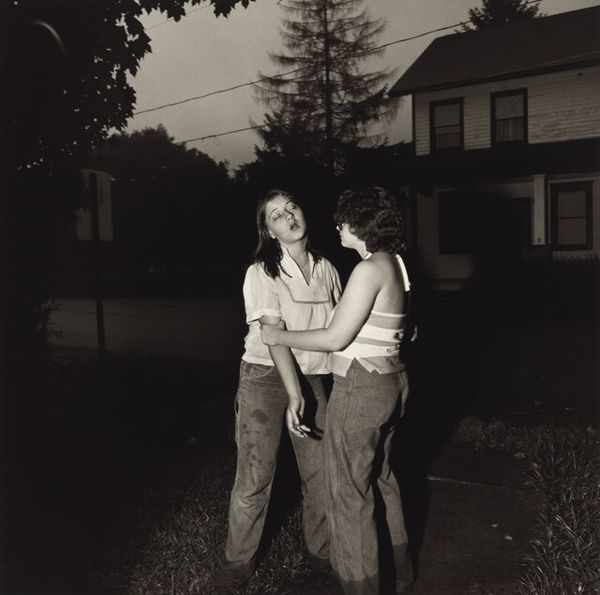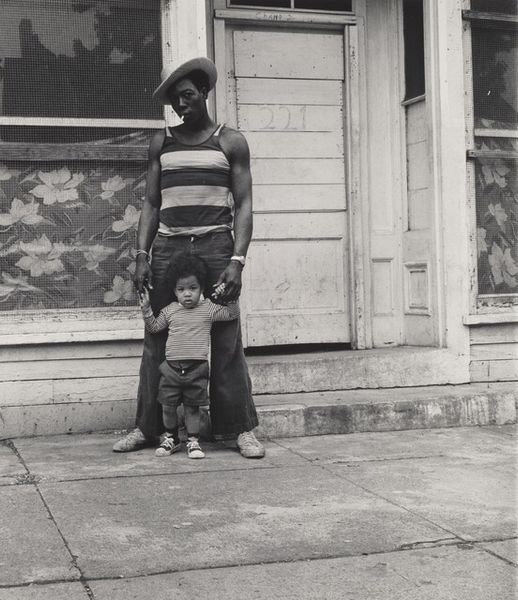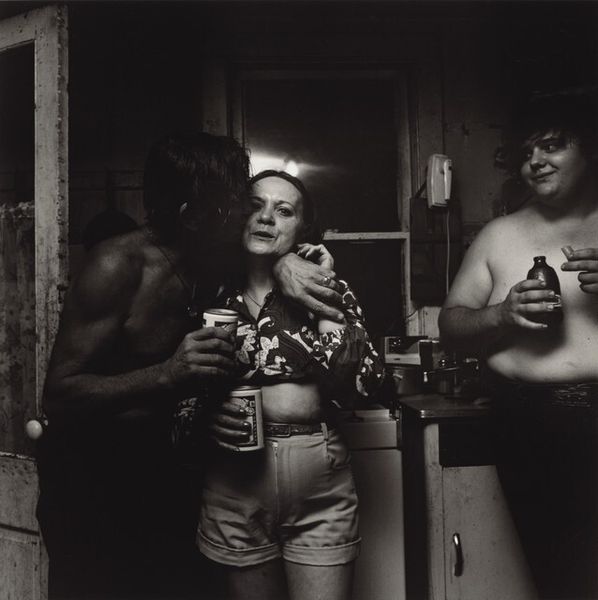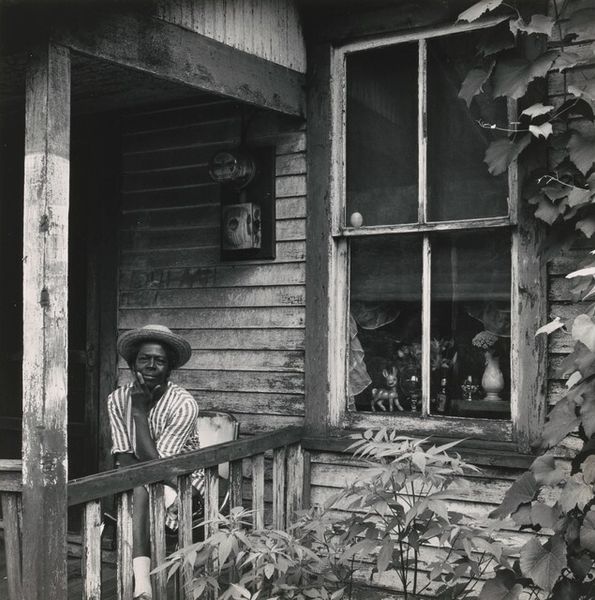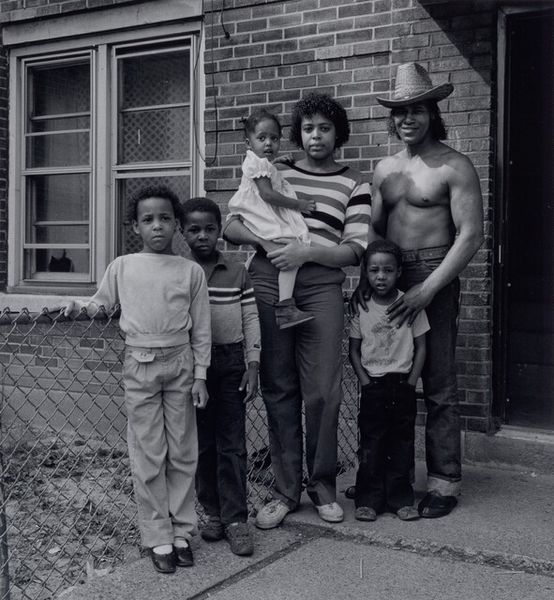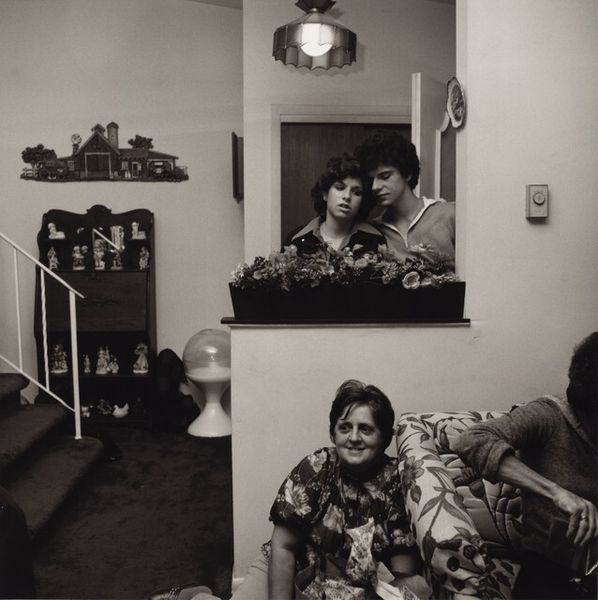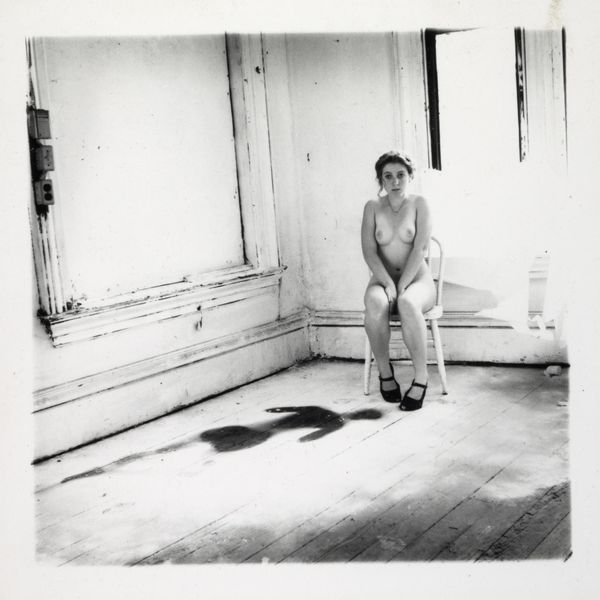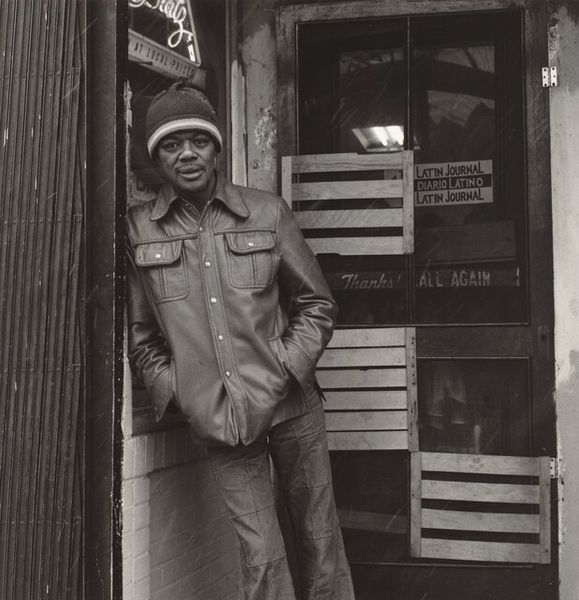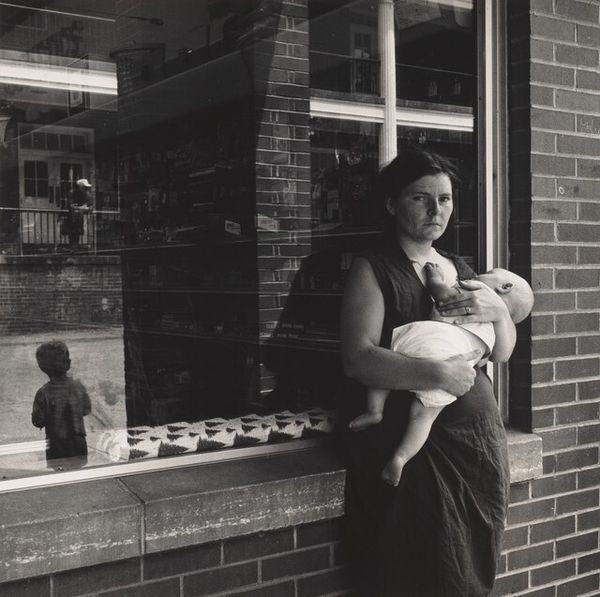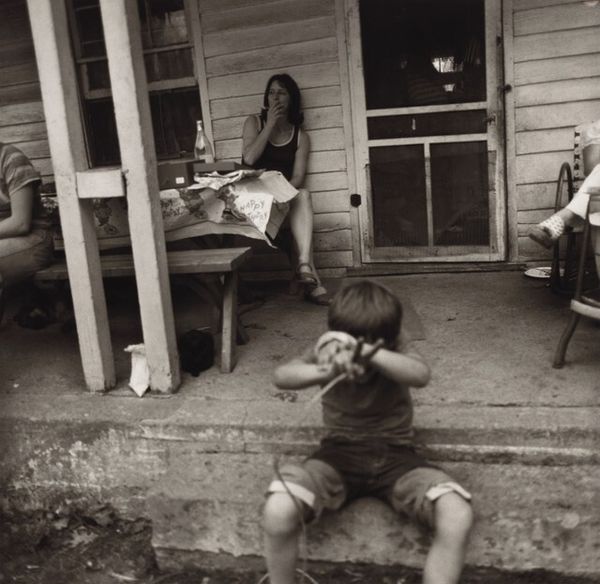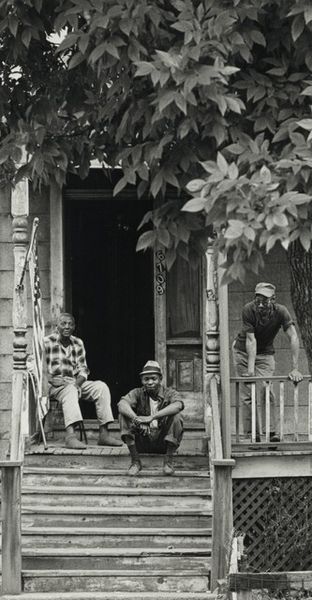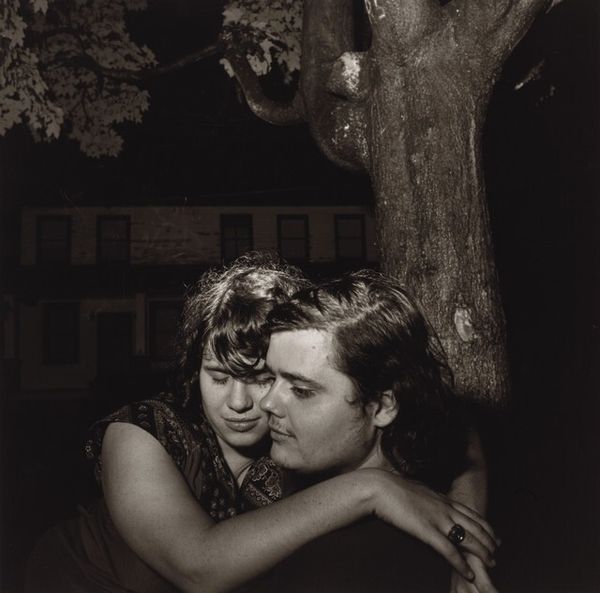
photography, gelatin-silver-print
#
portrait
#
black and white photography
#
figuration
#
social-realism
#
archive photography
#
street-photography
#
photography
#
historical photography
#
black and white theme
#
black-arts-movement
#
cultural celebration
#
gelatin-silver-print
#
monochrome photography
#
monochrome
Dimensions: image: 17 x 16.6 cm (6 11/16 x 6 9/16 in.) sheet: 20.3 x 20.3 cm (8 x 8 in.)
Copyright: National Gallery of Art: CC0 1.0
Curator: This arresting image is an Untitled work from Milton Rogovin's "Lower West Side series," taken in 1971. Rogovin used gelatin silver print to document communities facing economic hardship. What's your initial take? Editor: Stark. It’s the greyscale palette, the unflinching gaze of the subjects… they command your attention. There's a fascinating balance of light and shadow creating a layered effect. Curator: Rogovin saw himself as a social documentarian. He gave cameras to his subjects, empowering them to participate in shaping their own narrative, providing them agency within his practice, he was trying to capture a vanishing way of life shaped by deindustrialization and urban renewal policies. Editor: That's evident. Structurally, the composition is remarkably balanced. The figures are positioned asymmetrically yet anchored by the doorframe. Note the texture of the brick against the smooth surfaces within. The artist skillfully directs our eye, even incorporating that tiny ad sticker on the window! Curator: These photographs challenged established norms within fine art photography. They were viewed not as individual portraits but part of an ongoing social record that celebrated the lives and experiences of working-class families often ignored or marginalized. Editor: Yes, context is key. Looking closer at the clothing - the overalls, the open shirt – these sartorial choices tell a tale of place, era, class… consider also the way the female figure intersects the light, whilst the male one seems cast more into shadow – perhaps there is a story being told there as well? Curator: Absolutely. He directly confronted systemic inequality through the accessibility of his images. Rogovin created an archive which acted as a resource for activism and community self-representation at a key moment in urban development policy. Editor: Rogovin really does highlight an intrinsic dignity, there's an intimacy created by the pose, a familial quality and a sense of deep connection. Curator: Indeed, it goes beyond simple observation to forge a partnership. The image now offers us insight, a perspective from the past on pressing themes of community and resilience. Editor: It makes you wonder, what were their dreams? How do they see themselves reflected? Curator: Powerful questions to leave us with. Rogovin's approach invites us to continuously question the dynamics between artist, subject, and viewer. Editor: This photograph has more to offer than at first glance, and will likely draw me in many times over.
Comments
No comments
Be the first to comment and join the conversation on the ultimate creative platform.
